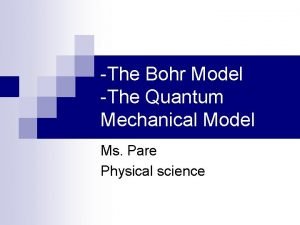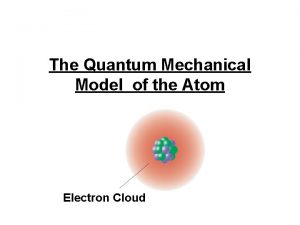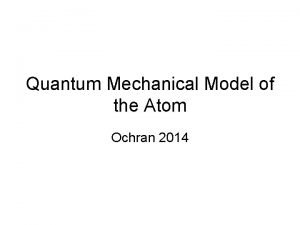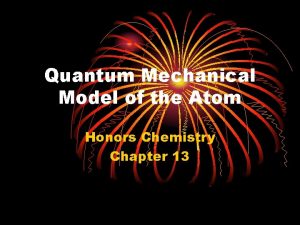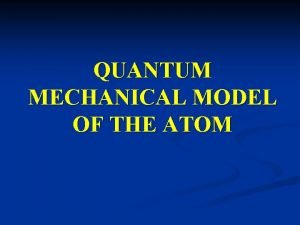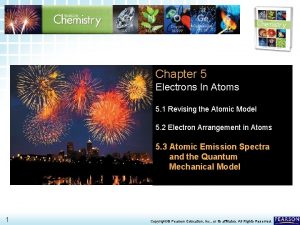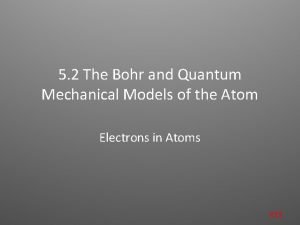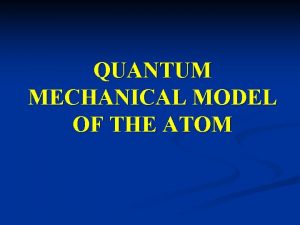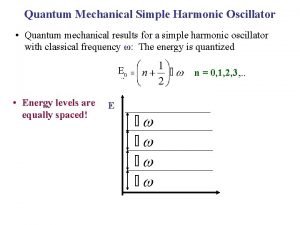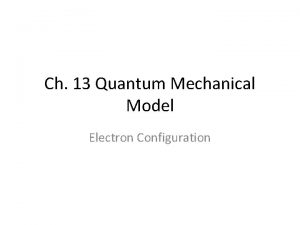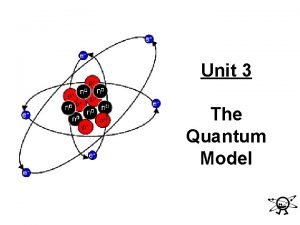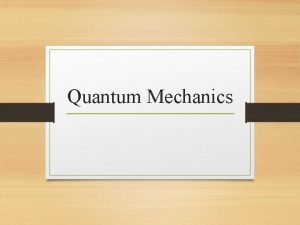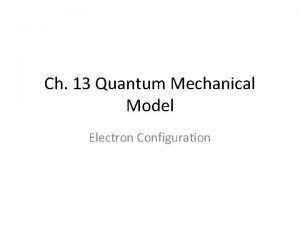Quantum Mechanical Model Chapter 5 Section 2 Quantum








- Slides: 8

Quantum Mechanical Model Chapter 5 Section 2

Quantum Mechanical Model The model of the atom that treats electrons as waves Like Bohr the quantum model limits an electron to certain energy levels Unlike Bohr’s model it makes no attempt to describe an electrons path

Vocabulary Atomic Orbital – the 3 D region around the nucleus that the wave function predicts Principal quantum number (n) – indicates the relative size and energy of atomic orbitals Principal energy level – energy levels indicated by the principal quantum levels Energy sublevels – sublevels in principal energy levels

Atomic Orbitals Orbital shapes Orbitals increase in size as principal quantum number increases s, p, d, and f


Energy Sublevels The number of energy sublevels increases as the principal quantum number increases Designated by s, p, d, and f

Principal Quantum Number (n) Sublevels (types of orbitals) present Number of Orbitals Total number of Orbitals related to Principal energy level 1 s 1 1 2 s p 1 3 4 3 s p d 1 3 5 9 4 s p d f 1 3 5 7 16

Review Questions 1. Draw and Label the parts of a wave. 2. What is the relationship between wavelength and frequency? 3. List the electromagnetic spectrum from lowest frequency to highest frequency. 4. What is the frequency and energy of a microwave 0. 060 m in length? 5. Draw an atom in the ground state and the excited state. 6. Describe the photoelectric effect. 7. Describe how an emission spectra is formed. 8. Compare and Contrast the Bohr Model and the Quantum Mechanical Model.
 Bohr model vs quantum model venn diagram
Bohr model vs quantum model venn diagram Wave mechanical model
Wave mechanical model Schrodinger wave mechanical model
Schrodinger wave mechanical model Sublevel d
Sublevel d What is the electron configuration of 24cr4+?
What is the electron configuration of 24cr4+? Modern quantum mechanical model
Modern quantum mechanical model Atomic emission spectra and the quantum mechanical model
Atomic emission spectra and the quantum mechanical model Quantum mechanical model
Quantum mechanical model What is the electron configuration of 24cr4+?
What is the electron configuration of 24cr4+?
